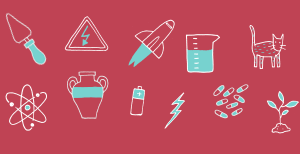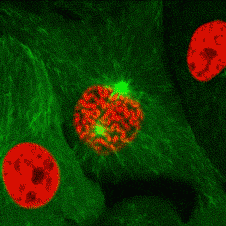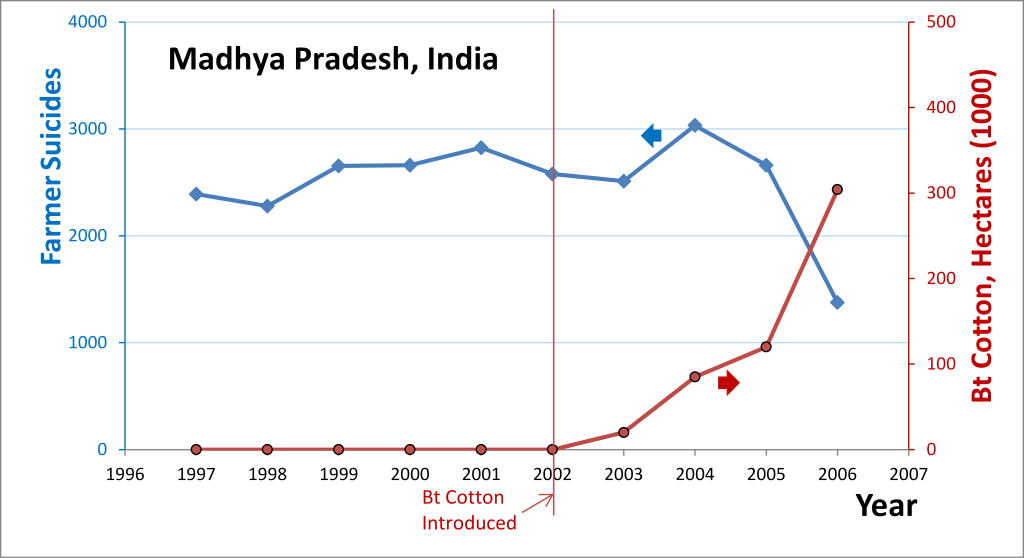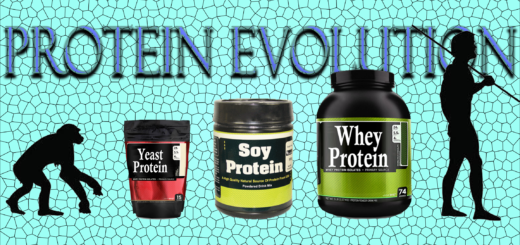Genetically modified food, radioactive crops and seedless mules. What have we done to our food?
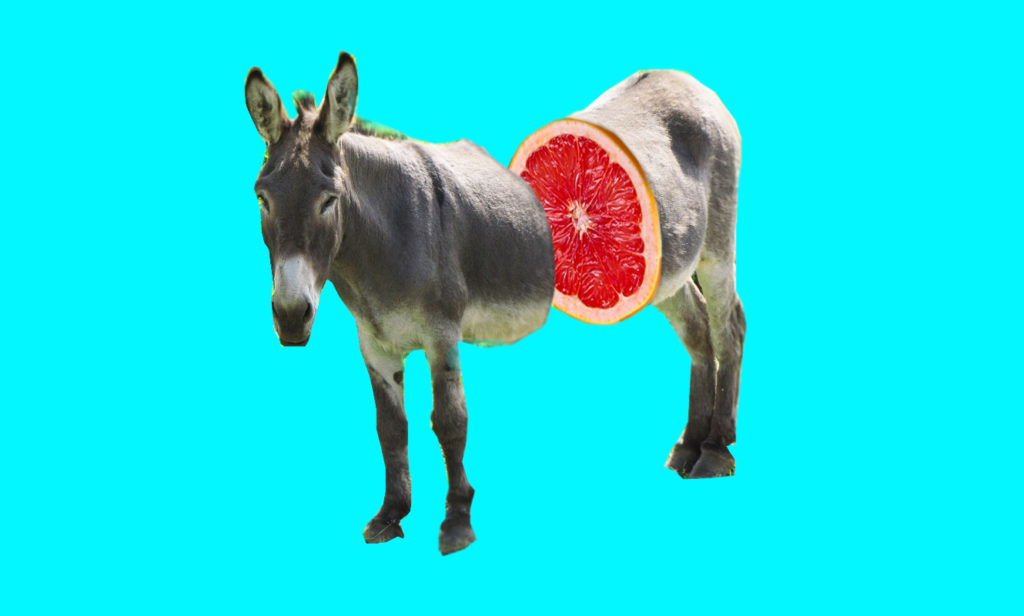
Every single life-form on earth has formed from genetic modification. 4.1 – 3.8 billion years ago the first life form on earth emerged from the primordial mud (unless we are aliens) and since then earth’s genetic library has gone through modification after modification through a process of mutation and selection to create every single species we see today. So why can’t I go on the internet without seeing some post by a “nutritionist” or “well being specialist” about the evils of genetic modification. How could something be evil if its responsible for all of life? You might say that isn’t the kind of genetic modification they are talking about, you might say that this modification is natural and, therefore, not evil. But nearly every single non-GMO crop we eat has gone through an incredibly unnatural process which has caused massive changes to the genetic make-up of that crop. These unnatural processes range from selective breeding to exposing crops to radioactive materials. Yet all of these crops (even the offspring of radioactive mutants) can be found in the organic aisle at the supermarket.
Let’s start with selective breeding, Tristan mentioned this before in his blog about the cutest experiment ever; this is a process where we take the outliers, the unnatural mutants, the freaks, and breed them with other freaks to create super freaks. We have carried out this process of freak breading for 1000s of years creating unnatural abominations that have such a modified genome that many of these super freaks cannot successfully breed with their wild counterparts. Note that one definition of a species is a group of organisms which can successfully breed with each other. Therefore, because these super freaks (domesticates) can only breed with each other and not with their wild counterpart from which they were created from this means humans have created whole new species. This doesn’t seem natural to me at all! Take the wolf as an example, we have bred the freaks of this species for thousands of years until we created the abomination that is the chihuahua. Yes, we took the 45kg bison killing wolf and bred the freakish mutant outliers until we created the 2kg purse accessory which is the chihuahua. That would be like breeding short outlier people like Tom Cruise and Shakira, then breeding the freakishly short and undoubtedly beautiful children, and continuing this process until we had a human species which had a full adult weight of approximately 3.7kg. I’m sorry, but I wouldn’t consider the chihuahua or the Cruise and Shakaira offspring (the CrusKira) mini-adonises natural.
Figure 1: Two fine specimens of CrusKira. Note the males are in a continuous state of running just as their founding ancestor Tom Cruise was.
Yet paleo-diet enthusiasts and detox-nutritionists claim that the normal orange pumpkin is a natural food despite it’s weight ranging from 5kg to 1000kg. Like the chihuahua this weight is freakish and was only possible through the CrusKiraification (selective breeding) from a wild cultivar that’s fruit normally weighs between 0.3-1kg. Nothing we eat is close to natural; we are eating 3.7kg CrusKiras (figure 1). That isn’t natural and it IS a process of genetic modification. OK, but the misinformation queen Dr. Libby might defend her organic obsession by saying that the plants were selected from the natural pool of genetic variation, so although humans are guiding it, it is still natural. I would argue that CrusKiras aren’t even close to natural, but let’s except the point that I fabricated for Dr. Libby and look at some more unnatural things that we’ve done to crops: like how did we make fruit seedless given that seeds are the entire reason fruits evolved (so poop filled animals would eat the seeds and then poop them out in a new location with ample fertilization (poop))
Seedless mules: We all know mules are the hybrid baby of a donkey and a horse and you probably know that all mules are infertile. This is because DNA is packaged up into chromosomes and every normal animal on the planet has an even number of chromosomes because we have two complete sets; one from the mother and one from the father (humans have two sets of 23 chromosomes). Unfortunately for the mule, the donkey has 64 chromosomes and the horse has 62 chromosomes, each of them donate half their chromosomes to the sperm or egg and so the mule ends up in an awkward situation of having 63 chromosomes. This can’t divide into two to create fully functional gametes (sex cells like sperm or eggs) and so the poor old mule is sterile or you might say seedless.
A similar process has been used on the watermelon to create delicious seedless crops. Except to create the uneven number of chromosomes, the devilish gardeners have been doing something VERY unnatural. They have treated the plants with the toxin Colchicine which prevents the division of chromosomes seen below (figure 2) by preventing the formation of those beautiful green Spindle apparatus which pull the sets of chromosomes apart. This means the ovum (plant egg) contains either two sets of chromosomes or none, the one with none dies (you kind of need DNA) and the one that lives can be fertilized. When this ovum is fertilized by a normal pollen cell the resulting embryo has three sets of chromosomes!! This uneven number leads the plant to be as fertile as the poor old mule.
Figure 2: Chromosome sets getting pulled in half to create gametes (sex cells) with half the
DNA of the original cell (SOOO COOL, Biology rulz)(that z wasn’t even intended to be ironic).
These awkward plants with an odd number of chromosomes have been spread throughout the world using cuttings (vegetative propagation) which means they are all clones of each other with no genetic variation within a strain. This lack of variation makes them incredibly vulnerable to disease and this has in the past all but wiped out the normal supermarket banana (Gros Michel). A new awkward odd-numbered chromosome species (the Cavendish) was propagated to replace the commercially extinct Gros Michel.
The toxin Colchicine used to create the seedless watermelon has also been used to duplicate the number of chromosomes multiple times to create mutants that instead of having two sets of chromosomes they have eight! The advantage of eight sets of chromosomes is that more DNA can often result in more protein and larger cells, and larger cells can mean bigger juicier fruits. This is one of the ways the tiny wild strawberry was turned into the monstrous size it is today, by genetically engineering it through toxins to have four times the amount of DNA it should have, some varieties even have 10 sets of chromosomes called decaploidy! But remember this isn’t considered proper GE or GM and IS considered natural and organic. Because of this, these mammoth chemically-induced mutant freak strawberries can be found in the organic section at your local supermarket. But don’t worry, the story of what is considered genetic engineering and what is considered natural and organic is about to reach the next level of inconsistency; because up next we will delve into the use of radioactive materials to create new mutant crops that are still considered by health nuts to be natural and are probably on display at the organic section of your local supermarket.
The millennia old process of selectively breeding the freakiest best plants with other freaks to produce even freakier plants relies on the naturally occurring freaks of nature. These freaks occur infrequently, but they’re out there, just think of the Donald Bradmans, the Jonah Lomus and the pre-domestic-troubles-Tiger-Woodses. Freaks exist. But the naturally occurring mutated freaks selective breeding process was, for many agricultural scientists, too slow and so the scientists wanted to speed up the mutation process so they would have more freaks to selectively breed. Basically, the naturally occurring freaks weren’t freaky enough. Here’s what they did, they figured out that x-rays, gamma rays and radioactive materials mutated genes, so they exposed seeds and pollen to these sources of radiation and this randomly mutated the crops giving a whole new source of variation with which the selective breeding process can be applied. What started in the 1920s with firing x-rays at corn has now grown into millions of seeds being placed in lead boxes with the highly radioactive cobalt-60. This process has created many popular crops such as dwarf rice and blood red grapefruit. Radiation induced mutation is still being used today and isn’t considered by governments or Greenpeace to be GE or GM.
So what the heck is considered GE or GM? These terms have come to refer to the insertion of specific genes into an organism using a range of gene-editing techniques. Interestingly, these techniques are based on naturally occurring genetic engineering processes that bacteria and viruses use. That’s right, in your intestines right now bacteria are genetically engineering themselves by inserting genes from viruses into their own genome; some viruses also insert their genomes into the DNA of their host. GE is a natural process. Humans have commandeered these processes by utilizing them to insert the genes we would like inserted into the organisms of our choosing. Genetic engineering is a controlled process which produces very specific and far more predictable changes to the crop than the radiation method. Yet for some reason there are huge lobby groups who are very effectively villainizing GM with various smear campaigns without mentioning the fact that all crops are unnatural mutant freaks created by toxins, hybridization, 1000s of years of unnatural selection and/or even radiation. These groups are often: well funded, aggressive , dishonest and, from this blog I hope you can see, inconsistent. One example of a smear campaign against GE/GM was the widely spread claim that GM crops were failing in India and this was causing thousands of farmers to commit suicide. As you can see from the graph below this just clearly isn’t true.
Figure 3: Spurious correlation suggesting that the uptake of the GM crop BT cotton is not causing farmer suicides in India.
Gruère, G. & Sengupta, D. (2011), Bt cotton and farmer suicides in India: an evidence-based assessment, The Journal of Development Studies, 47(2), pp 316–337
The truth is that specific insertions of genes into crops can do wonderful things like: prevent blindness in children who are vitamin A deficient1, create cheap edible vaccines for the prevention of deadly diseases2, produce crops which require 33% less pesticides 3,4, increase crop yields by 22%3 , and increase farmer profits by 68% 3. This can help stimulate the economies of low income nations such as Uruguay who have enthusiatically embraced this technology. Not to mention the application for non-crop related GM like: GM yeast that is creating biodiesel and ethanol fuels, antibacterial, anti-fungal and hormone based medicines, and insulin for diabetics 5. I could go on but the point is that the potential for GM to improve the lives of people is nearly limitless.
We created unnatural mutant freak crops 1000s of years ago, we then ramped up the freakification process using toxins, hybridization and radioactive material and this gone under the radar without a whimper from the Foodbabes of this world. But now that scientists have a real opportunity to help people with some amazing technology there is a huge up-roar which is slowing the process, costing potentially billions of dollars and lives. All because we have have a false idea of what is natural and we are scared of something we don’t understand. I’m not saying nothing bad can come from GM and that it shouldn’t be regulated. I’m saying that we’ve been playing god of the crops for 10,000 years and we’ve been doing it blind. Why are we turning away from a process where we can finally see what we are doing. Single gene insertions have a bad press agent, that is all. The population is expected to peak at 12 billion, 5 billion more than we have now. If we are going to feed these people, we have two choices: 1) chop down rains forests, divert rivers to turn deserts into fertile soil and use loads of pesticides and fertilizers to create more arable land, OR 2) get way way way better at producing more food on less land. I’d prefer the second option and don’t see how we can do this without GM.
- Tang G, Hu Y, Yin SA, Wang Y, Dallal GE, Grusak MA, Russell RM (2012). beta-Carotene in Golden Rice is as good as beta-carotene in oil at providing vitamin A to children. American Journal of Clinical Nutrition 96(3): 658-664.
- Tiwari S, Verma PC, Singh PK, Tuli R (2009). Plants as bioreactors for the production of vaccine antigens. Biotechnology Advances 27(4): 449-467.
- Klümper W, Qaim M (2014). A Meta-Analysis of the Impacts of Genetically Modified Crops. PLoS ONE 9(11): e111629.
- Li G, Wang Y, Liu B, Zhang G (2014). Transgenic Bacillus thuringiensis (Bt) rice is safer to aquatic ecosystems than its non-transgenic counterpart. PLoS ONE 9(8): e104270.
- Steensels J, Snoek T, Meersman E, Nicolino MP, Voordeckers K, Verstrepen KJ (2014). Improving industrial yeast strains: exploiting natural and artificial diversity. FEMS Microbiology Reviews 38(5): 947-995.

